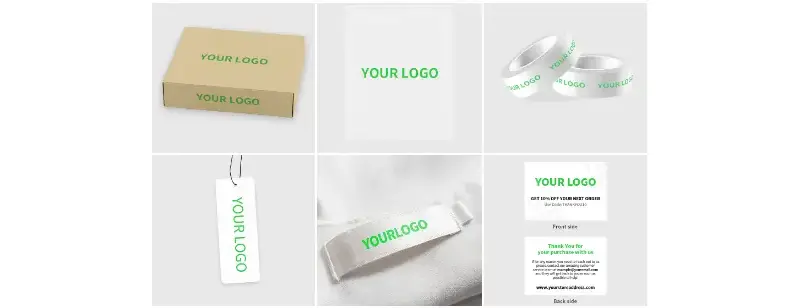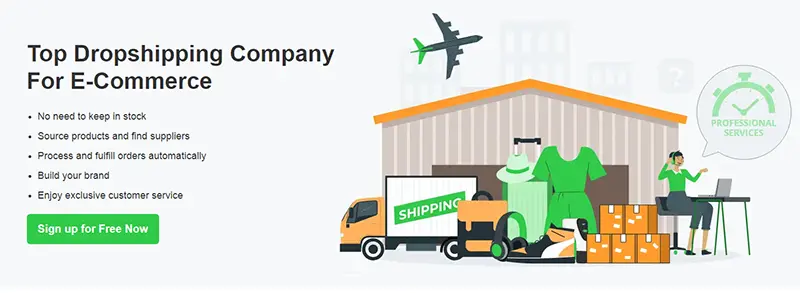Dropshipping has become one of the most lucrative business models in today’s growing e-commerce industry. The lack of inventory management and low-cost startup options attracts many entrepreneurs. However, the ultimate factor that decides a dropshipping business’s success is its products.
This article answers “How to find dropshipping products?” while exploring the intricate process of looking for profitable items.

7 Factors to Keep in Mind on the Hunt for Dropshipping Products
“How to find products to dropship?” is a common question amongst entrepreneurs. The rising competition in the e-commerce landscape requires dropshipping businesses to have an edge. Therefore, when choosing products, you must consider certain essential factors.
1. Profitability
Look for items with a high-profit margin. Consider the product cost, shipping fees, and any other costs associated with the dropshipping process. Subtract the entire costs from the selling price to calculate the potential profit. Moreover, aim for items with a healthy profit margin to maintain your company’s long-term viability.
2. Target Audience
Understanding your target audience is critical for selecting the appropriate items. Research their demographics, interests, and purchasing habits to understand their preferences. Furthermore, consider age, gender, locality, interests, and lifestyle preferences. Matching product selection with your target audience’s demands boosts your chances of attracting and converting clients.

3. Product Quality
Ensure that the things you select are of excellent quality. Quality is critical to customer pleasure and retention. Hence, look for long-lasting, practical, and devoid of flaws. Before making a final decision, consider gaining samples or reviewing user reviews to evaluate the product’s quality. Remember that providing substandard items might harm your brand and result in bad customer experiences.
4. Brand Image
Dropshipping items should be consistent with your brand’s image. Therefore, consider how the items fit your brand’s values, aesthetics, and message.
Look for items that are sustainable or created from recycled materials if you have positioned your company as eco-friendly, for example. Maintaining consistency in your brand image aids in developing client trust and loyalty. Hence, select goods that enhance your brand’s identity while attracting the correct audience.

6. Seasonality
Take into account the seasonality of the goods you select. Some products, such as holiday-related items or seasonal accessories, can increase demand during certain seasons. While evergreen items sell consistently throughout the year, including seasonal products can enhance sales at peak seasons. You can plan your product assortment to include both evergreen and seasonal things.
7. Shipping and Delivery
Shipping is crucial for customer satisfaction. Your customers want their orders to arrive on time and in good condition. So, choosing vendors who offer efficient shipping and quick delivery is important. Assess the supplier’s location and transportation charges to verify they align with your business objectives and client expectations.
8 Steps for Finding Dropshipping Products
How to find products for dropshipping? Here’s an extensive guide with all the essential steps.
1. Market Research
Identifying Popular and Trending Niches
You should start your search for successful dropshipping items by identifying popular and trending themes. Begin by undertaking extensive market research to ascertain current customer demand. Use tools like Google Trends to gain insight into search traffic and interest for certain keywords or niches over time. Moreover, investigate industry-specific websites, forums, and social media platforms to learn about developing trends and customer preferences.
Analyzing Competition
To find dropshipping winning items, look at what your competitors are selling. Identify and evaluate the major players in your target niche’s product offers, pricing tactics, and marketing approaches. This study might assist you in identifying market gaps that your company can fill. Besides, look for underserved sub-niches or new product versions that established rivals do not provide.
You can use various methods and platforms to collect data and insights about customer demand. Google Keyword Planner shows you keyword search volume and related keywords, helping you assess the popularity of various product categories. Moreover, you can monitor discussions and trends about your niche using social media listening platforms like Hootsuite or Brandwatch. This information can give useful insights into consumer preferences and assist you in tailoring your product options accordingly.

2. Product Selection Criteria
Profitability Analysis
Profitability is an important issue to consider while buying dropshipping items. Thus, analyze the cost of products, shipping costs, and other associated charges to determine the possible profit margin for each product. Look for items with a solid profit margin to establish a sustainable company strategy. Consider the entire price plan, including competitive pricing, while preserving an acceptable profit margin.
Market Demand and Customer Needs
Understanding market demand and consumer requirements is critical for choosing lucrative goods. Conduct market research to find items with a large number of prospective customers. Moreover, look for goods that address an issue or satisfy a consumer’s demand. Examine client comments, reviews, and online forums to learn about their preferences, pain spots, and desires. You boost your chances of success by matching your product options with client wants.
Competition Analysis
Consider the competition for each product you are considering. Standing out in a crowded field might be tough, especially if you’re just starting. Look for items with moderate competition where you can differentiate your brand and provide clients with unique value. Consider specialized items that appeal to a certain demographic, which will help you to target a more specific consumer base and position yourself as an authority in that field.
Shipping Feasibility
Shipping logistics are critical in dropshipping. Hence, consider if it is feasible to distribute items from your suppliers to customers promptly and cost-effectively. Assess the source location, shipping options, and delivery timelines. Shipping procedures that are dependable and efficient add to client satisfaction and repeat business.

3. Trend Analysis
Monitoring Industry Trends
It is critical to keep up with industry developments to locate successful dropshipping items. To detect emerging trends, follow industry blogs, news websites, and the social media profiles of influencers in your sector. Participate in online chats or social media platforms to determine the popularity and endurance of certain trends. You can benefit from early market demand and brand yourself as a trendsetter if you are at the forefront of trends.
Social Media and Trend Analysis Tools
Social media networks like Instagram, Facebook, and Pinterest are great for identifying trends. Hence, monitor hashtags and prominent accounts in your niche to find items that are gaining momentum. Trend analysis programs like TrendHunter and BuzzSumo can give insights into popular topics, phrases, and goods. These tools assist you in identifying new trends and predicting their long-term viability.

Assessing Longevity and Market Saturation
While identifying trends is critical, analyzing their endurance and market saturation is also critical. Some trends are fleeting and can not create long-term economic opportunities. Therefore, weighing a trend’s growth trajectory, amount of competition, and market saturation point. Look for items that can remain relevant and generate regular demand long after the initial excitement has worn off.
4. Supplier Research
Identifying Reliable Suppliers
Finding dependable suppliers is critical to the success of your dropshipping business. Look for suppliers who have a demonstrated track record of dependability and order fulfillment on schedule. Use supplier directories like EPROLO, Alibaba, or SaleHoo to uncover a diverse choice of vendors across several product categories. Moreover, examine supplier evaluations and ratings to determine their credibility and reputation in the eyes of other dropshippers.
Assessing Product Quality
While identifying trends is critical, analyzing their endurance and market saturation is also critical. Some trends are fleeting and can not create long-term economic opportunities. Therefore, weighing a trend’s growth trajectory, amount of competition, and market saturation point. Look for items that can remain relevant and generate regular demand long after the initial excitement has worn off.
Shipping Options and Efficiency
Evaluate potential vendors’ shipping options and efficiency. Look for suppliers who provide quick and dependable delivery options, allowing you to deliver timely items to your clients. Moreover, consider suppliers who offer tracking information, allowing you to keep customers updated with their purchase progress. Efficient shipping methods add to client satisfaction and encourage repeat orders.
Supplier Communication and Support
Effective communication and supplier support is critical for your dropshipping business’s success. Consider their response to inquiries, ability to handle consumer problems, and readiness to fix any difficulties that can develop. A dependable and helpful supplier can help you resolve issues quickly and maintain a great client experience.
List of Reliable Dropshipping Suppliers
Here’s a list of reliable dropshipping suppliers and the top-notch services they offer:
- EPROLO
With 100+ products and wholesale pricing, EPROLO’s free dropshipping platform serves 300K+ users globally. The dependable dropshipping supplier offers quality products at competitive rates so that you can set a high-profit margin and earn more.
The company provides dropshipping business owners with valuable services like warehousing fulfillment and delivery tracking. Moreover, the dropshipping supplier offers various integrations with renowned platforms such as Shopify and eBay.

- CJ Dropshipping
CJ Dropshipping is another rising name in today’s business landscape. With numerous products and various integration services, this China-based e-commerce platform offers quality warehousing fulfillment services too.
- Spocket
Spocket offers dropshipping services to help US, and European-based suppliers find quality dropshipping products. Furthermore, the numerous integrations assist dropshipping business owners in promoting their products on other marketplaces.
- AliExpress
AliExpress rose to fame during the early dropshipping days and has maintained its reputation. The ever-growing product offerings and global range help AliExpress stay relevant and aid dropshipping business owners in doing the same.
5. Keyword Research
Conducting Keyword Research
The importance of keyword research in tailoring product descriptions and titles for search engine exposure cannot be overstated. Identify high-volume, low-competition keywords related to your goods using keyword research tools. Some reliable keyword research tools are Google Keyword Planner, SEMrush, or Ahrefs.
Moreover, they give information on the number of keyword searches, similar terms, and keyword difficulty. To boost search engine results and generate organic traffic, incorporate important keywords naturally into your product listings.
Long-Tail Keywords and Specificity
Along with broad keywords, concentrate on long-tail keywords that are more targeted and have less competition. Long-tail keywords frequently represent potential buyers’ intent and are more likely to convert into sales. Instead of searching for “running shoes,” consider searching for “women’s lightweight running shoes for trail running.” Thus, you can attract a more focused audience and enhance conversions by tweaking keywords to specific client demands.
SEO Strategies for Product Descriptions
Optimize your product descriptions by strategically combining important keywords. Create distinctive and interesting product descriptions highlighting the essential features, advantages, and selling factors. Furthermore, ensure the descriptions are informative, easy to understand, and valuable to potential buyers.
Use headers, bullet points, and formatting to improve readability and emphasize crucial information. Well-optimized product descriptions can boost your search engine results and drive quality visitors to your business.
6. Analyzing Profitability
Cost of Goods and Pricing
Estimate your product’s profitability by analyzing its cost of goods. Consider your suppliers’ purchase price, packaging charges, and other product customization or branding costs. In addition, set competitive pricing that provides a healthy profit margin while keeping customers interested. To remain competitive, research and alter your price approach regularly.
Shipping Fees and Considerations
When calculating the profitability of your dropshipping items, include delivery costs. Research several shipping options and compare their costs to choose the most cost-effective and efficient approach. To make the purchase process easier for customers, consider giving free delivery or factoring shipping prices into the product price. Maintaining profitability requires balancing competitive prices and transportation expenses.
Potential Profit Margins
Subtract the cost of products and delivery expenses from the selling price to get the possible profit margins for each product. Choose items with a solid profit margin to support your business and allow for reinvestment and expansion. Analyze profit margins across product categories and pick goods with the highest profit potential.

Consider the initial cost necessary to calculate the ROI for various product options. Determine the break-even point and the time required to recoup your initial investment. Furthermore, consider profit margin, market demand, and competition when determining a product’s profitability based on the predicted ROI. Prioritize goods that provide a greater ROI in a fair amount of time.
7. Testing and Validation
Pre-orders and Crowdfunding
Pre-orders or crowdfunding campaigns can test market demand and validate product feasibility. Pre-order your items to test client interest before spending heavily on inventory. Thus, launch a crowdfunding campaign on sites like Kickstarter or Indiegogo to test demand and receive feedback from potential clients. These techniques assist in reducing risks and validating the potential success of your chosen items.
Small-scale Advertising and Promotion
Launch small-scale advertising initiatives to gauge market reaction to your offerings. Use platforms like Facebook Ads, Google Ads, or influencer marketing to target your prospective audience. Moreover, track these campaigns’ performance, including click-through rates, conversions, and customer feedback. You can adjust your marketing methods based on the outcomes to maximize your product selection and marketing efforts.
Analyzing Customer Feedback and Reviews
Gauge product satisfaction, demand, and enhancement opportunities by reviewing consumer comments and reviews. Encourage clients to submit feedback by sending follow-up emails, surveys, or asking for reviews. Furthermore, take note of frequent problems, requests, or positive feedback to discover improvement areas or prospective product extensions. Customer comments and reviews can help you fine-tune your product selection and enhance the customer experience.

8. Scaling and Diversification
Scaling Successful Products
It’s time to grow your dropshipping business after you’ve found successful items. Increase your inventory levels, improve your supply chain, and broaden your marketing efforts to reach a wider audience. Monitor product performance and adapt your methods to retain momentum and capitalize on the success of your top-performing goods.
Exploring Additional Product Lines
Consider expanding your product lines to diversify your dropshipping business and enter new markets. Identify items that complement your present offers and meet the demands of your target audience. Moreover, assist your decision-making process by researching trends, client preferences, and market demand. Introducing new product lines can raise average order value, attract return consumers, and stimulate business development.
Niche Expansion
Expanding into new niches can help you reach a broader client base while decreasing your reliance on a particular product category. Hence, investigate and uncover niches that are aligned with your business goals and have the potential for development. Examine competition, market demand, and profitability to guarantee a successful expansion. Create a complete marketing plan to enter new areas and position your brand as an authority.
How to Find Dropshipping Business: FAQs
1. How do I identify trending products for my dropshipping business?
Monitor the latest market developments, social media platforms, influencers, and famous online marketplaces to uncover trendy items. Conduct extensive research and client demand analysis to discover which items are currently in great demand.
2. How can I differentiate my dropshipping products from competitors?
You can focus on giving unique value to your consumers to distinguish your dropshipping items. Personalized customer service, unique packages or customization options, extensive product descriptions, and guidelines help create a brand. Collaboration with influencers to promote your items can also help you achieve this.
3. How many products should I offer?
Various criteria, including your target audience, specialty, and available resources, determine how many items you should sell. It is normally advised to begin with a smaller product line and progressively grow as you gain knowledge and expertise. Since quality is more important than quantity, focus on curating a selection of items consistent with your brand and target demographic.







